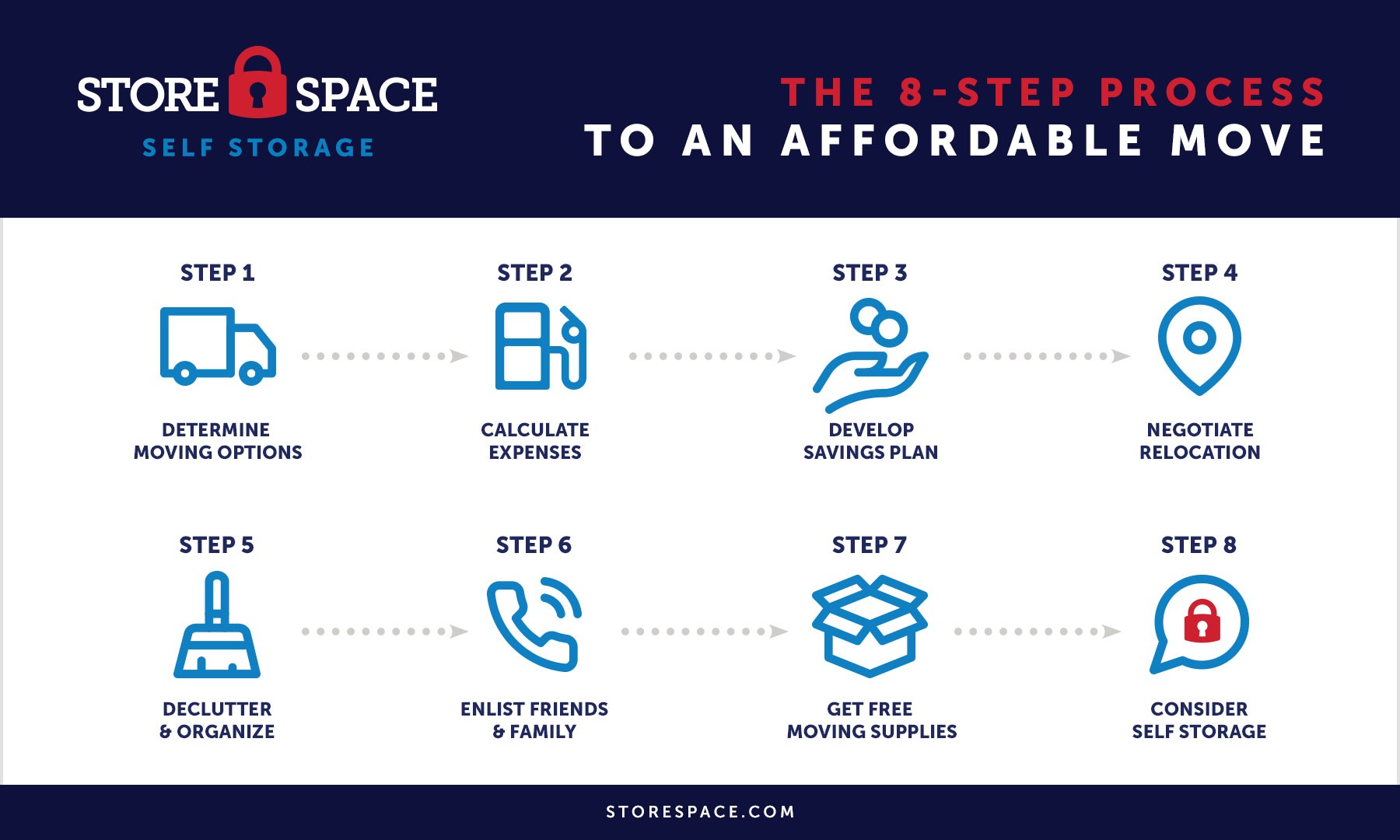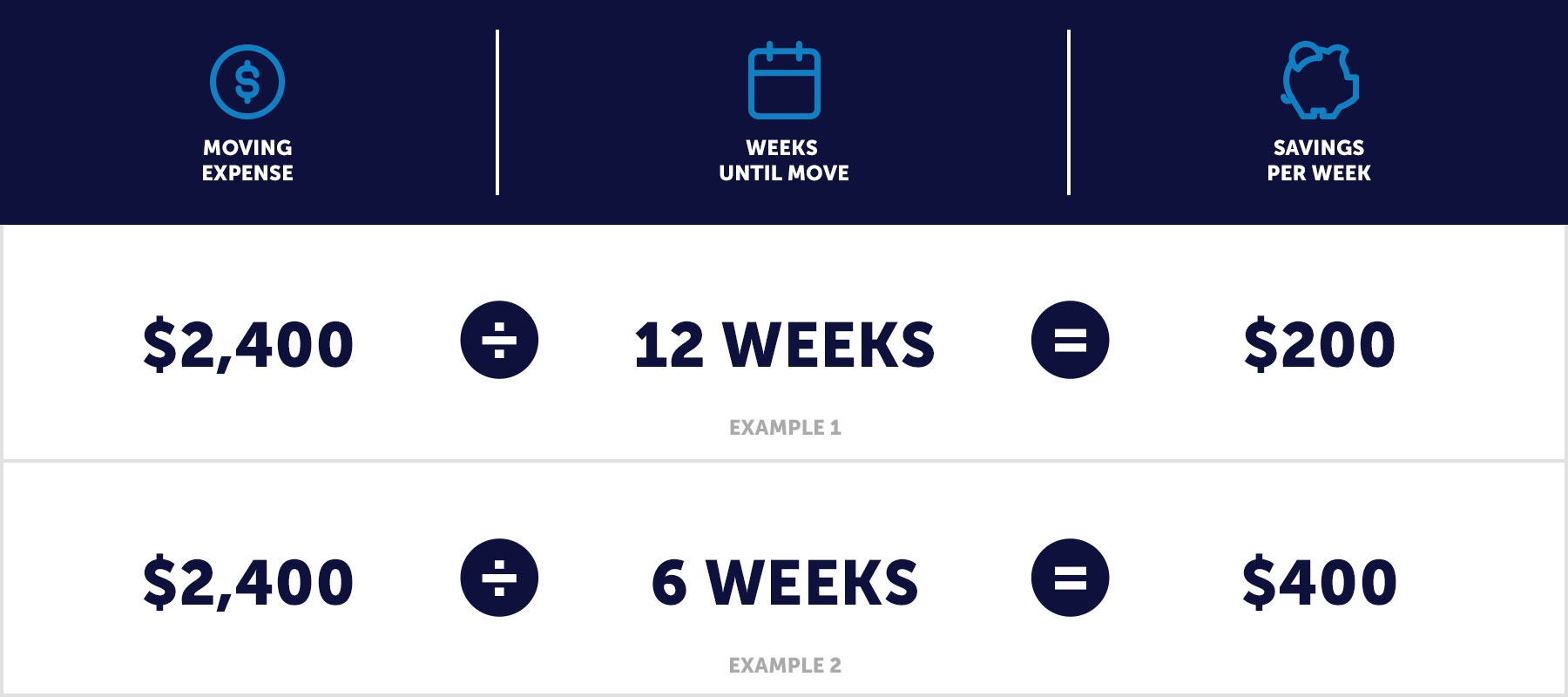The Cheapest Way to Move to Another State: An Affordable Moving Guide in 8 Steps

Figuring out the cheapest way to move to another state used to be a hassle. Then, we created this affordable moving guide. Now, anyone can move from state to state or even long distances across the country with ease and frugality. Just follow our 8 steps and you will be off to your new locale in no time.
Discovering the best way to move out of state on a budget is as easy as that. But before you read ahead consider this: you might be excited about your move, but it’s not uncommon to experience stress and anxiety, too. A recent survey from OnePoll even found that moving is more stressful than divorce, getting married or having kids for some people. To manage this stress, it is important you are honest with yourself about why you are moving and any potential challenges you expect to encounter during the move.
After you take stock of your feelings, concerns and worries, it will be easier to predict which aspects of your move are likely to leave you stressed. Exploring your new city, starting your new job, and setting up your home in a new state may all bring you endless excitement, but these phases can also be incredibly overwhelming. It’s all a matter of perspective. One of the major sources of anxiety associated with a move is the cost involved.
Luckily, by reading this guide, an expensive move is one worry you can quickly eliminate. As for your other concerns, approach them individually and make sure to give yourself time to adjust once you move.
8 Steps to Consider When Moving Out Of State
Here are 8 ways to reduce moving costs when relocating to a new state:

1. Personal vehicle, moving truck, pod or professional movers?
The first step in figuring out how to move affordably is to determine what type of vehicle you are going to use to transport your possessions. In general, there are four common moving options. These include using a personal vehicle, renting a moving truck, hiring professional movers, or reserving a moving pod. Below each of these moving options are discussed further.
A. Personal Vehicle
Utilizing your personal vehicle is the cheapest way to move across country. In addition, this option is the most flexible. Moving with your personal vehicle will allow you to adhere to your own moving schedule, accurately predict fuel expenses and avoid exuberant vehicle shipping fees.
The main cost associated with a DIY move is fuel. However, if your vehicle does not have enough room for all your possessions or if it can’t quite fit a few larger items, you may want to consider renting a trailer. Most trailer rentals range between $300 – $700 for a state-to-state move. Obviously, the longer you need the trailer, the more expensive it will cost to rent.
B. Moving Truck
If you are moving across the country with enough furniture to fill your new home, then you may need to rent a moving truck. This median moving option is less expensive than hiring professional movers but more expensive than using your own personal vehicle.
Common expenses associated with this moving option include the moving truck rate, fuel and additional moving supplies such as straps and pads. Moving truck rental rates are typically calculated as a base rate or a per-mile rate.
C. Moving Pod
Moving pods offer a convenient alternative to the moving truck. These portable storage containers are typically dropped off outside a customer’s residence. The customer then has an allotted amount of time to pack their possessions into the pod before the container company returns to pick up the moving pod. After this step is completed, the moving company will then transport the container to the customer’s new residence, where they can unpack.
Typically, a moving pod rental is more expensive than a moving truck. However, unlike a truck rental, you will not have to worry about driving a large vehicle, refueling or making a hasty drive across the country.
D. Professional Movers
Professional movers are by far the most expensive moving option. Hiring professional movers is also the most convenient moving option. This might be hard on your wallet, but it will be easy on your back. Pretty much everything your move entails will be handled by the movers. This comprehensive service includes packing, transporting and unloading.
If you are interested in hiring professional movers, then consider shopping around to get the best rate.
2. Calculate moving expenses
Once you determine which moving option best suits your moving preferences you can begin calculating how much your move will cost. The common costs associated with any move include the chosen moving option, moving supplies, hiring movers and other expenses such as food, hotels, and in some cases, air travel. Assigning a value for each of these variables and producing a sum of all these values will give you your total moving cost. The equation included below represents this calculation. Learn about the hidden costs of moving.

3. Develop a savings plan
After you calculate your estimated, total moving expense, the next step is to develop a savings plan to fund your move. The best way to get ahead of the expense associated with a cross-country move is to develop a plan to save money months in advance.
A simple way to develop a savings plan for your specific moving expenses is to take the total expense and divide it by the amount of time you have left before your move. This calculation is displayed by the equation below.

4. Negotiate a relocation package
Relocation assistance packages are supplemental packages that some employers offer to cover moving expenses, transportation costs, or work-related fees. New hires moving from one state to another often qualify for these packages. However, occasionally an employer may not offer a relocation package unless a potential employee mentions it during their interview or offer negotiations.
The best way to negotiate a relocation package into your offer of employment is to research what a typical relocation package includes for your position and company. If you know other individuals working for your company received a relocation package, then you can make a strong case that you should qualify for a similar package.
Indeed suggests that employees also assess their own needs and emphasize mutual benefits when presenting a relocation package request to their employer.
5. Declutter & organize your possessions
Obviously, the biggest hassle of your cross-country move is going to be transporting all your possessions from one state to another. Furthermore, the sheer volume of your possessions will likely determine what type of transportation you use to move. However, you still may be able to limit your moving expenses by taking time to declutter and organize your possessions. No matter what moving option you decide to utilize, decluttering and organizing your belongings can help you make your move easier.
Decluttering is a great way to decide what you should take with you and what you are okay with leaving behind. This will also allow you to free up space in your personal vehicle, moving truck or other moving option by eliminating unnecessary items.
Organizing your possessions will save you time and money. If you decide to use professional movers, having all your belongings organized and packed in marked boxes can speed up the process. Most movers charge by the hour, so speeding up their process can provide great savings. In addition, if you are moving your possessions yourself or with the help of friends and family, taking the time to organize your possessions can eliminate stress and make unpacking easier.
6. Enlist friends & family
If you are hoping to move without hiring movers or a moving company, then your best bet is to seek help from friends and family. Your closest friends and family members will likely be more than happy to help you move (especially if lunch and snacks are provided). They also have likely been in the same position before and understand the need to save money during a big move.
Even if your pals or family can’t necessarily help you through every step of the process, even gaining assistance during any one of the moving phases can be very helpful. Moving with friends and family can also be a great way to make a mundane activity joyful and exciting. Eliminate the need to hire help by contacting your trusted friends and family.
7. Secure moving supplies for free
Cut down on your moving expenses by sourcing items like cardboard boxes and others for free from retailers, grocery stores, and local classifieds. Neighbor.com even recently put together a list of 20 places to find free moving boxes.
These places include well-known sources like Walmart and Costco, as well as some hidden gems such as Starbucks, Barnes & Noble, and PetSmart.
You may also be able to source additional moving supplies such as tape, straps and pads from certain companies. Sites like Craigslist are also a good source for finding free or cheap moving supplies.
8. Consider self-storage
The last moving option is to move your items directly into storage if you’re still shopping around for an apartment or house and living in a temporary situation. Renting a storage unit can be a great way to safely store items that would be a hassle to bring with you to your temporary living space. If you do decide to rent a storage unit to assist you during your move, consider these tips.
- Rent a climate-controlled storage unit to store vulnerable items such as furniture, electronics, antiques and paper documents.
- Determine what size storage unit you need, so that you don’t overpay for space you don’t need.
- Shop around to find the best rate and storage unit for your needs. Some storage facilities may offer a catchy promotion and then offer terrible customer service. You don’t want to be left out to dry when it comes to the security of you and your items.
FAQs
Q: What is the cheapest way to move to another state?
A: The cheapest way to move to another state is by using your own personal vehicle instead of hiring movers or renting a moving truck. Other steps to secure an affordable move include developing a savings plan, enlisting the help of your friends and family, securing free moving supplies, and organizing and decluttering your possessions.
Q: How to move to another state with no income?
A: Moving to another state with no income is risky. However, it is not impossible. Assessing your expenses, savings and future income might allow you to develop an achievable plan. Securing free moving supplies and gaining help from friends and family can also help.
Q: How can I make moving easier?
A: You can make any move easier by following these tips:
- Consider Your Moving Options
- Calculate Moving Expenses
- Develop a Savings Plan
- Negotiate Relocation
- Declutter & Organize
- Enlist Friends & Family
- Secure Moving Supplies for Free
- Consider Self Storage
Q: How much should it cost to move?
A: Moving costs can vary for several reasons including distance, different moving options and the number of items needed to be transported. A local move, using your personal vehicle, may only cost a tank of gas, whereas a cross-country move with the use of a moving truck may cost upwards of $5,000.
Ready to Move? Store Space is here to help!
If you have decided to pack up all your items and move across the country, you may find that self-storage is a necessary step in this process. Luckily, Store Space is here to assist you. Not only do we offer professional storage at affordable prices, but we also pride ourselves on offering exceptional customer service.
Check out our storage location finder to find the facility located closest to you or your destination. Whether you are a homeowner or a business seeking storage, Store Space cares about you!







